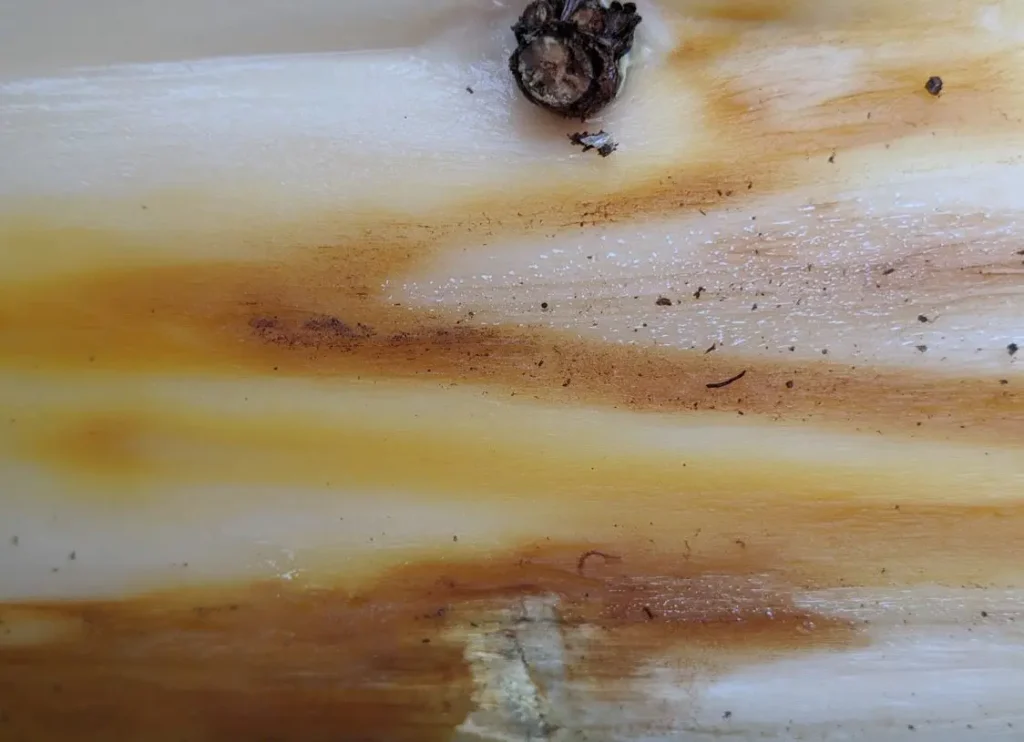
Thirty feet and a thousand pounds of pencil straight Japanese cedar recently came crashing down in the woods near our cabin. It sounded like thunder but there was no storm…only the sound of a lone chainsaw. The next day as we were checking on the newborn goats we came across the tree that made that thunderous noise just days before.
There it lay out by the barn, trimmed of its branches and lifted off the ground on wood blocks as if on a stretcher awaiting an ambulance. We almost felt sorry for it.
That was until we were given the opportunity to strip this sweet smelling, majestic tree of its bark in order to prepare it for its next life as one of two roof trusses for the new horse stables under construction.
For 4-5 days after felling the bark of a Japanese cedar is so delicately attached to the wood that it simply peels off like a banana peel. After that the bark begins to harden and attach itself to the tree making it more of a challenge to remove by hand. During that crucial first few days once you have just a hint of purchase you can effortlessly run your hand between the bark and the wood. It is like undressing the tree.
The sound of the bark quietly peeling and the smell (like the inside of a coconut) is crazy wonderful. It is impossible to describe how giddy we were and how hard we were laughing when we attempted to roll it over to get to the underside and continue our work. It is not easy to roll a thirty foot, 300 pound log over…even when it’s in a good mood.
The silky layer of sustenance between the bark and the wood, known as the phloem, is the very lifeblood that transports the nutrient-rich sap downward to all parts of the tree. The tree uses this sap to grow new limbs, produce flowers and set fruit or seeds. In a pine tree, the sap feeds the tree as it develops pine cones and grows taller and stronger.
Experiencing this slick, gelatinous élan vital for the first time was an amazing experience and one that we will never forget.
Knowing that this tree once offered protection to many living things beneath it and will now shelter horses during inclement weather was another example of how the circle of life is nurtured and manifested by caring stewards of the land.
Trees provide shelter. So do roofs.






